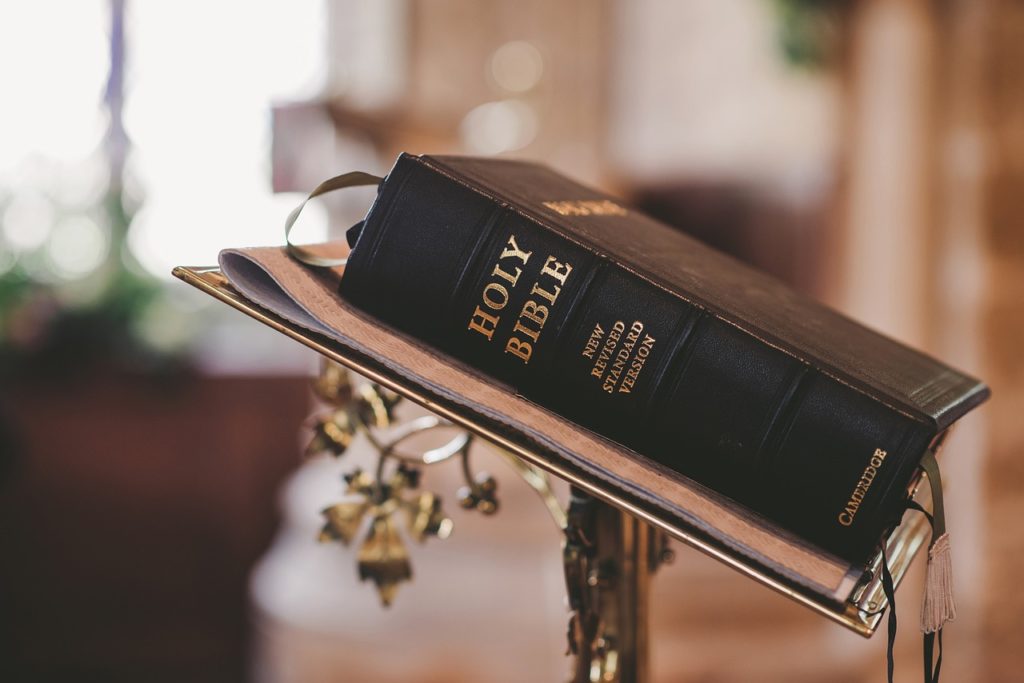Introduction to the Roman Catholic Mass – II
In the second article of this three-part series, we begin our journey into the heart of the Roman Catholic Mass by exploring its individual components and the scriptural roots from which they arise. In this installment, we will focus on the Introductory Rites and the Liturgy of the Word.

Biblical Foundations of the Roman Catholic Mass
The Roman Catholic Mass is not merely a ritualistic ceremony but a rich and deeply Scriptural act of worship. Each element of the Mass is either directly drawn from Sacred Scripture or closely echoes the worship practices of the early Christian and Jewish communities found in the Bible. From the opening sign of the cross to the final dismissal, the Mass reflects the pattern of God’s revelation through Word and Sacrament. This essay explores the biblical sources of each part of the Mass, showing how the liturgy is grounded in the living Word of God and in the mystery of Christ’s sacrifice.
I. Introductory Rites
The Mass begins with the Sign of the Cross, which invokes the name of the Holy Trinity. This gesture is directly rooted in Christ’s command in Matthew 28:19: “Therefore go and make disciples of all nations, baptizing them in the name of the Father and of the Son and of the Holy Spirit.” By marking ourselves with the cross, we remember our Baptism and our identity as disciples.
The priest then greets the people with a liturgical salutation such as “The Lord be with you,” which echoes greetings found in Scripture. In Ruth 2:4, Boaz greets his workers by saying, “The Lord be with you!” Similarly, St. Paul frequently begins his letters with greetings such as the one found in 2 Corinthians 13:14: “May the grace of the Lord Jesus Christ, and the love of God, and the fellowship of the Holy Spirit be with you all.”
The Penitential Act, where the faithful acknowledge their sins and ask for God’s mercy, is steeped in biblical language. The tone and content reflect penitential prayers like Psalm 51, “Have mercy on me, O God, according to your unfailing love,” and the humility of the tax collector in Luke 18:13, who prays, “God, have mercy on me, a sinner.”
The Gloria, a hymn of praise, originates from the song of the angels at the birth of Christ in Luke 2:14: “Glory to God in the highest heaven, and on earth peace to those on whom his favor rests.” This ancient hymn is a continuation of the angelic worship that began on the night of Christ’s Nativity.
II. Liturgy of the Word
The Liturgy of the Word begins with readings from Scripture, following the practice described in Luke 4:16–20, where Jesus reads from the prophet Isaiah in the synagogue. St. Paul, in 1 Timothy 4:13, instructs Timothy to devote himself “to the public reading of Scripture, to preaching and to teaching,” underscoring the centrality of Scripture in worship.
Following the first reading, the assembly sings or recites a Responsorial Psalm, an ancient tradition going back to the time of King David, as seen in 1 Chronicles 16:7, where David appoints Levites to lead the people in psalms of thanksgiving and praise.
Before the proclamation of the Gospel, the people stand and sing the Alleluia, which means “Praise the Lord.” This exclamation appears frequently in the heavenly worship scenes of Revelation, especially in Revelation 19:1–6, where the saints and angels cry “Alleluia” before the throne of God.
The Gospel Reading is the high point of the Liturgy of the Word, because Christ Himself speaks through the words of the Gospel. In John 6:63, Jesus declares, “The words I have spoken to you—they are full of the Spirit and life.” Therefore, the Gospel is received with special reverence and joy.
After the Gospel, the priest or deacon delivers the Homily, breaking open the Scriptures and applying them to the lives of the faithful. This practice follows the example of Jesus on the road to Emmaus in Luke 24:27, where He “explained to them what was said in all the Scriptures concerning himself.”
The community then stands to proclaim the Creed, a summary of the Christian faith. This echoes early creedal formulations like the one in 1 Corinthians 15:3–7, where Paul recounts the core of the Gospel message. It also finds a parallel in the Shema of Deuteronomy 6:4: “Hear, O Israel: The Lord our God, the Lord is one,” a communal declaration of faith in God.
Next, the faithful offer the Prayers of the Faithful, or General Intercessions, praying for the needs of the Church, the world, and individuals. St. Paul instructs in 1 Timothy 2:1, “I urge, then, first of all, that petitions, prayers, intercession and thanksgiving be made for all people,” emphasizing the Church’s role in interceding for humanity.
Conclusion
In our next installment, we will explore the second part of the Roman Catholic Mass. I hope this has been clear and has helped you gain a deeper understanding of the mystery of the Eucharist. May it also enrich your experience and insight the next time you participate in the Mass.